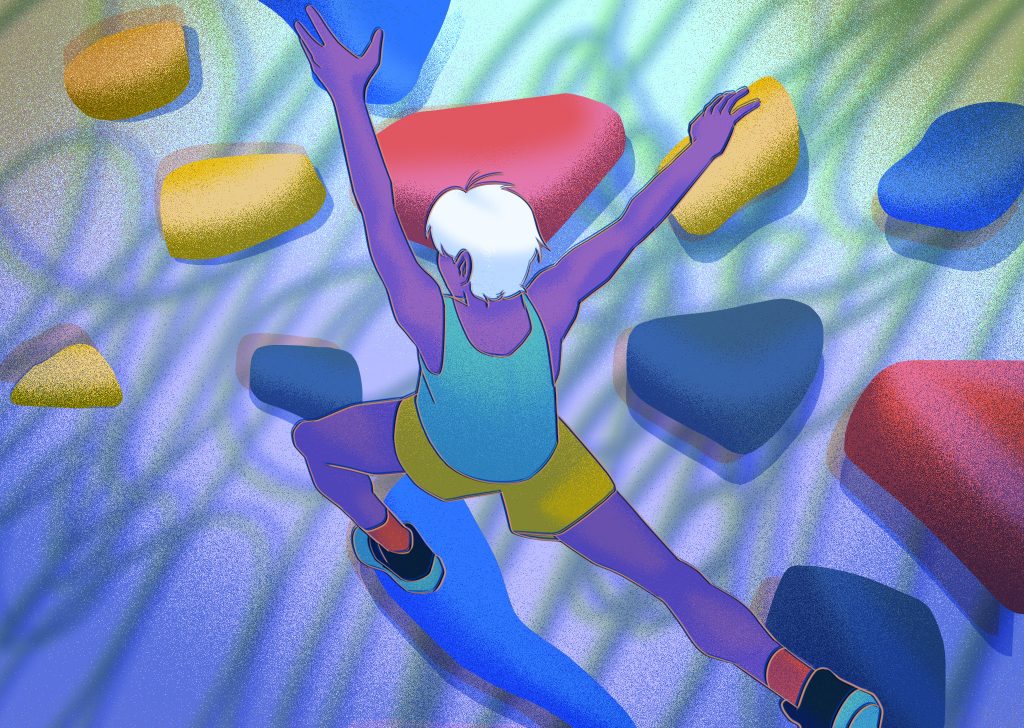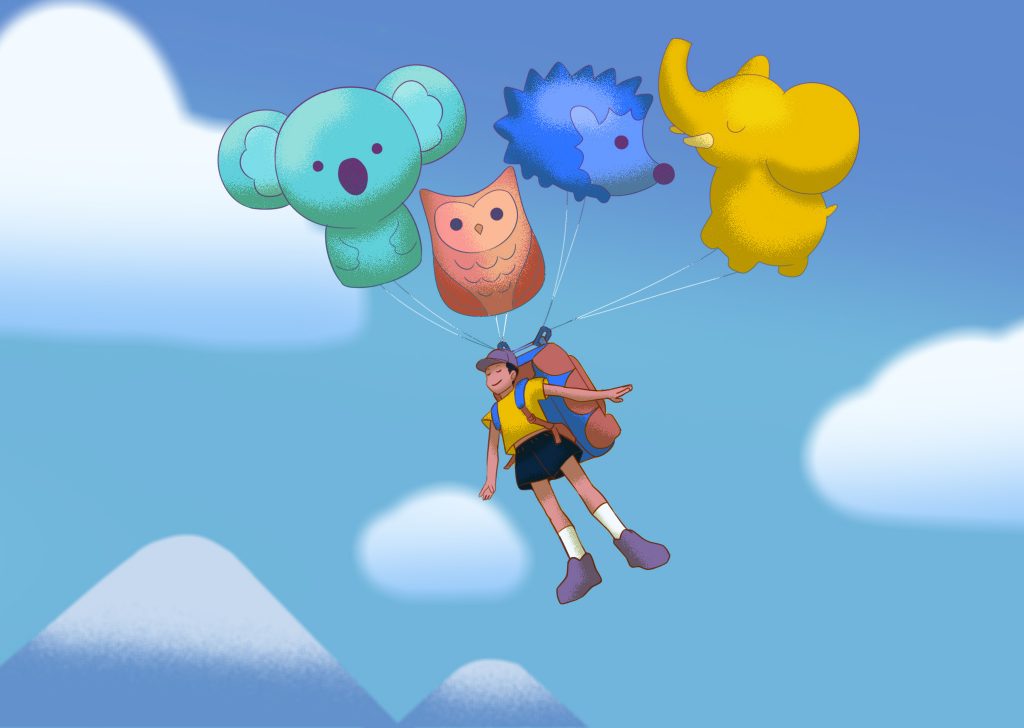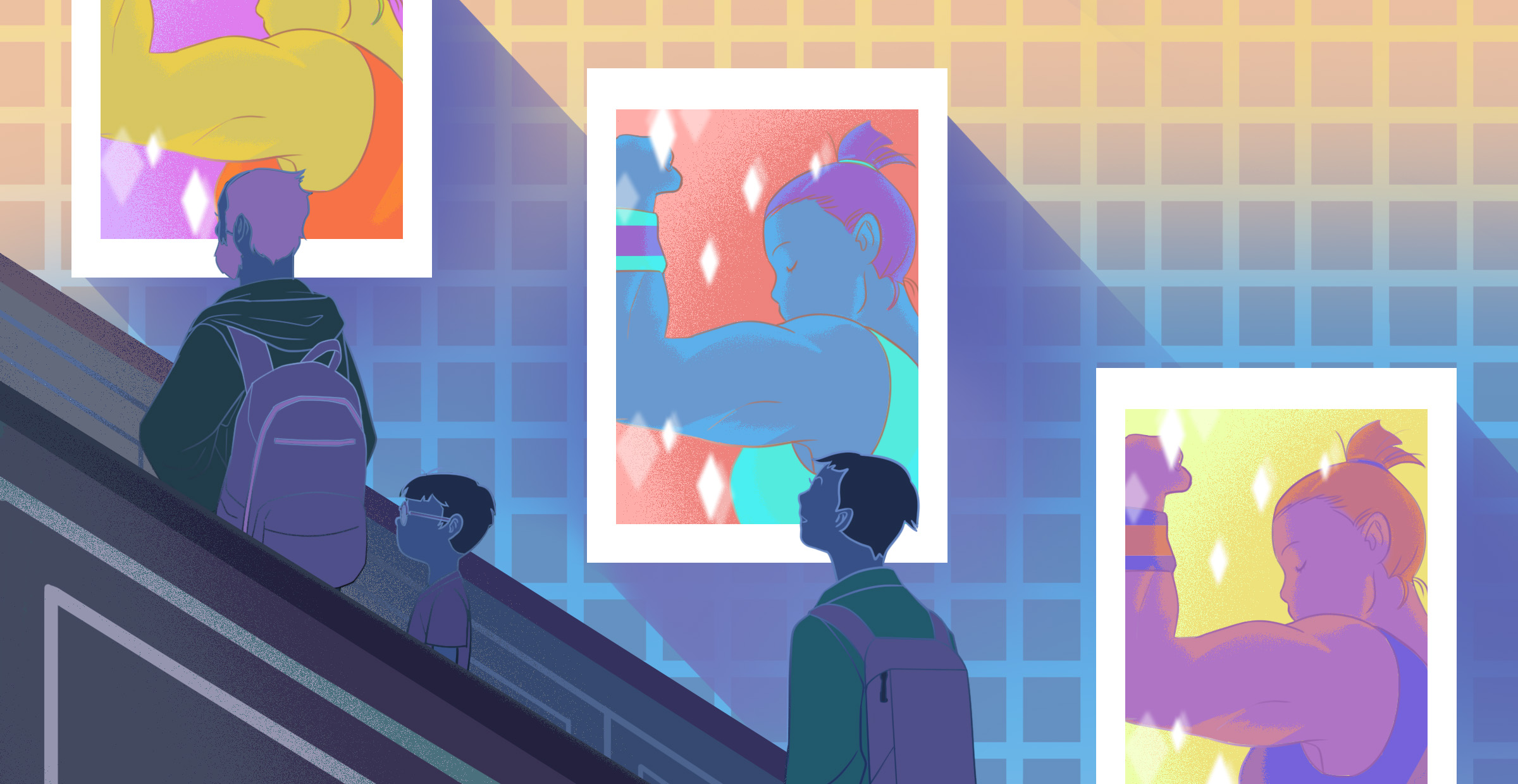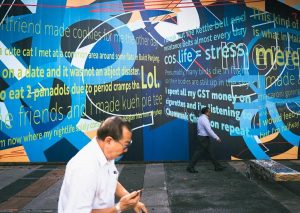All illustrations by Audrey Halim for RICE Media.
It took months for Shamen Yee to come clean about her diagnosis.
To all her friends, colleagues, and acquaintances, it was a shock to hear that she had triple-negative breast cancer.
She’d always been a fiercely independent woman. To suddenly have such a debilitating condition felt destabilising—Shamen wasn’t ready to tell anyone that she needed help, and so withdrew into herself.
The turning point came when the side effects of her treatment hit her full force. It was then she finally lowered her guard—she broke out of that self-imposed prison and finally started reconnecting with friends through social media.
It was no longer her “dirty little secret”. Doing so also allowed her to regain autonomy over her cancer journey. Among all the well-wishes she received about strength and staying positive, “stay strong” was a recurring theme.
“Stay strong.” For all she understood about it as an expression of solidarity, the phrase held a different weight to her post-diagnosis. It felt like a platitude, as though those who said it to her weren’t interested in hearing what else she had to say.
“Think positive”, “focus only on the good things”, “ignore the bad”, “stay strong”. There was no doubt in her mind that words like these are said with the best intentions. Perhaps it’s just semantics, or maybe she misunderstood what resilience was supposed to mean.
Either way, strength had to come from somewhere, and she needed to continue adjusting to her new life.
Struggles Unspoken

It took a long while before Shawn Soh learnt how to live and sit with his negative feelings.
He had returned to Singapore in 2020 after spending a decade overseas. What should have been an exciting new chapter in his life was plagued with situational loneliness. Singapore was as much a home as everywhere else; that is to say, it felt foreign. Having been away from home for so long meant he had to build a new social circle from scratch.
“All my friends were on different life trajectories. We had drifted apart over the years and become different people,” he says. “Trying to make new friends and connections as an adult, especially in your mid-30s, is also really difficult.”
At an age when most people weren’t looking to form new yet close, intimate bonds, attempting to make new friends felt like an uphill battle. Dating applications weren’t much help, especially when combined with his social anxiety. Amidst the government-mandated social distancing and lockdowns, his shadow was his only constant company.
Loneliness shouldn’t echo, but it sure felt like it plagued every aspect of Shawn’s life. He threw himself into work to numb himself from the pain and the shame of his mental health issues. All that did was lead him further down a spiral of depression.
All this while, he firmly believed that resilience meant pushing himself and doing more to overcome his challenges. It wasn’t until a friend reached out to him, encouraging him to be kinder to himself, that he realised that being resilient meant accepting himself where he is in life, as well as having the patience to work through his challenges at his own pace.
It’s easy to have that same misconception towards resilience; Shamen sure did too. Maybe it’s a byproduct of growing up in a society with an overemphasis on productivity that resilience was also quantified in terms of output.
Resilience, by definition, is the ability to bounce back from difficulties, with “bounce back” being the key here. There is room to stop and fail, to rest, recuperate, and make improvements before attempting to tackle the challenge again.
According to the Singapore Youth Resilience Scale (SYRESS), resilience is a set of personality traits or resources that allows an individual to navigate through stress and negativities and emerge with a stronger mind.
SYRESS outlines 10 different aspects in which a person can be more resilient: Positive self-image/optimism, relationships/social support, humour/positive thinking, emotional regulation, personal control, personal confidence/responsibility, flexibility, perseverance, positive coping and spirituality/faith.
For Shawn, he chose to focus on the first two. He left his job to work on himself. To improve his perception of himself, he prioritised loving himself first; going to therapy to identify and improve his behavioural patterns, spending time to do and enjoy the things he liked and getting to know himself better. Achieving a healthier self-image paved the way for connecting with people—he respected himself and learnt to not just draw safe boundaries for himself but also to reach out to others and let them in.
His father, for one, had always been one of his pillars of strength. Though well-intentioned, the older man did have an accidental tendency to gloss over his son’s struggles with generic sayings like “be less sensitive” and “stay strong”.
Instead of quietly taking the slight, Shawn gently explained to his father how his words invalidated his feelings while also frankly telling the elder what kind of support he needed. Till today, he still calls his father when he needs a listening ear, and his father would hear him out without fail.
It was with this inner strength, as well as support from his relationships that Shawn slowly began opening up about his struggles on his social media account @plantbro_. And it turns out, there were plenty of others who felt the same way, many of whom had been more than willing to connect more deeply with him. Even when he felt lonely, Shawn knew he wasn’t alone anymore.
The entire journey to self-love took three long years, but Shawn feels like a completely different person. “I learnt that strength doesn’t come from being numb and pushing through. Strength comes from acceptance, vulnerability and patience that never gives up.”
Journey to Acceptance

Much like Shawn’s dad, there may be times when we make the faux pas ourselves. It bothered Keane Low for a long time–that he might have come across as invalidating the experiences of others when loved ones sought to confide in him.
Shawn admits to struggling with putting himself in other people’s shoes, and it’s a struggle that’s cost him dearly. He refrains from elaborating on the specific events but mentions how past experiences of accidentally invalidating people’s emotions continue to haunt him.
Rather than only telling people to “stay strong”, Keane stresses the importance of showing gratitude, to acknowledge the other party’s efforts in working through their personal struggles. To him, it’s hard to recognise your efforts, especially when you’re drowning in stress and anxiety.
“Sometimes, you just need someone to come along and say ‘Hey, thank you for working so hard. I know it may be difficult, but I can see the changes.’”
As for dealing with his personal demons, Keane’s still diligently working to shed his hindsight bias–something his therapist had pointed out that he was prone to. He used to ruminate often, thinking about how things could have turned out differently. It locked himself in a pit of self-regret.
Rather than be overly self-critical, he now takes the time to be nice to himself, to take everything one day at a time, and focus on the brighter side of things. That’s the secret to his resilience, he says, that combination of emotional regulation and positive thinking.
Stay Strong

“Stay strong” eventually became a crutch for Shamen, especially during her darkest days when chemotherapy left her worse for wear. The phrase was an anchor that moored her whenever she wanted to give up. She had constant mind fog, flaky skin, bruised nails, and a puffy face from all the steroids in her chemotherapy drugs.
“I felt nothing but all the ugliness in the world—physically, emotionally and mentally,” she shares.
“No one will ever understand what it means to be strong until being strong is all that is needed to live to fight another day.”
If she were an athlete, her friends and family were her cheerleaders. They might not have been able to ease her physical suffering, but they were always by her side to support and love her.
Through psychotherapy, she discovered how to regulate her emotions by channelling her pain into scribbles. She practised mindfulness, where she learnt how to observe and reframe her thoughts to be more helpful rather than self-destructive.
Humour also became her best coping mechanism. Humour had the power to cleanse the mind of its shackles and reset things so she could try again. Now, two years after her diagnosis, she able to share about her experience with a smile on her face.
“The moment you can laugh about your struggles (without bawling like a baby), half the battle is won,” she remarks.
“There’s no one-size-fits-all solution to finding the right headspace to bounce back. Resilience is a learnt skill.”
If enduring meant carrying a heavy backpack and trudging along without change, resilience meant actively finding ways to make the same backpack easier to carry–perhaps with better straps, using a trolley, or splitting the load with a friend.
Like Keane and Shawn, Shamen has learnt to give herself the space to go through her negative emotions, thank them and let them free (as Marie Kondo would endorse). She understands now that taking every challenge or struggle head-on isn’t the only way to deal with things. Sometimes, staying strong means knowing when to take a break, pick yourself up and then try again.
Staying strong was never about blaming yourself for not trying hard enough. It’s about reaffirming the strength within us to live our lives–and finding the strength to keep trying, maybe with a different approach this time.






